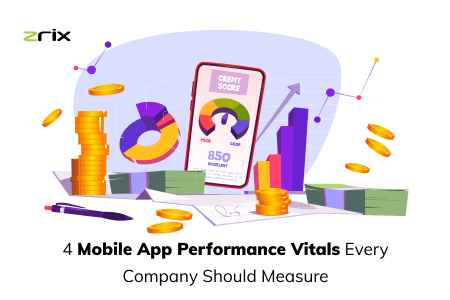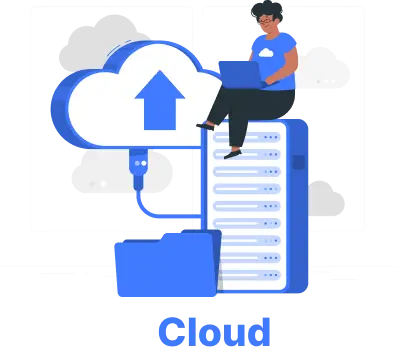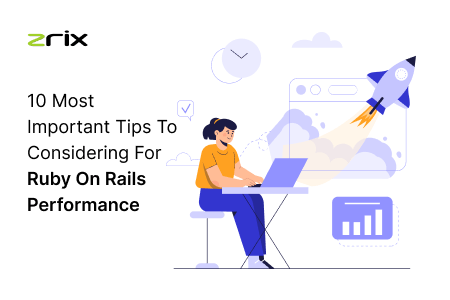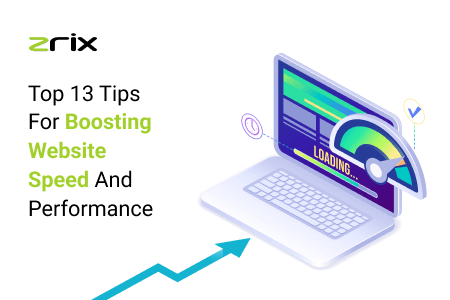4 Mobile App Performance Vitals Every Company Should Measure

Estimating mobile app performance is more urgent at any time. An incredible mobile app that does the expected work with no hiccups is off the charts valuable, or megabytes for this situation. Mobile apps scoring a 10/10 on every boundary is just about an idealistic idea!
Defects are available; however, the main thing you need to do is to guarantee that the app's performance doesn't go down over the long haul. Fortunately, there are ways of estimating the performance of mobile apps.
Discovering a portion of the applicable performance metrics is dependent on your app, its features, and its functionality.
Therefore, continue to assess the performance for every metric so you can continue to improve the app.
Quick Navigation
Organizations overall are hustling to fabricate applications that arrive at their customers' mobile phones and tablets. Slow and bug-ridden mobile apps leave users disappointed or even drive them to competitors.
Making outstanding user experiences across plenty of mobile devices and platforms is basic. However, seeing and settling performance issues can be a battle and time-devouring. While testing an application, ordinarily test environments don't repeat genuine conditions, and performance relapses may not show.
To get the most disappointing performance issues, a mobile app development company needs to investigate what's going on users' devices. This requires visibility into how quick the app starts, the length of HTTP requests, the quantity of slow and frozen frames, how quick perspectives are loading, and then some.
Although there are numerous metrics to consider, beneath are the main application performance vitals in this article, each company should track to see how an app is performing.
Why Mobile App Performance Monitoring is Important?
At the point when you monitor the right metrics for your mobile app's performance, you will wind up making processes to guarantee that any abnormalities in the metrics will be dealt with.
Also Read: Growth Hacking Your App Development Process for Greater Visibility
Without monitoring performance metrics, you won't ever realize what turned out badly. If you have data for the number of new subscribers for your mobile app, you will want to analyze and provide clarification, when there is a quick decrease this month.
By utilizing other related metrics and data, you can even think of a solution to handle something very similar. The level of effect that specific metrics have on your mobile app can be extreme. It's by and large why you need to follow the metrics as though everything relied upon it.
Partner your mobile app performance metrics with automatic alarming processes so effective moves can be made quickly during times of trouble. In this article, we will investigate mobile app performance vitals used to quantify the performance of a mobile app.
How to Improve Mobile App Performance?
Crash-free User and Session
The crash is viewed as a remarkable error that happens during the underlying loading period of the app. Tracking the level of users who didn't experience a crash and the quantity of sessions that didn't end because of an application crash is a significant KPI for estimating application stability.
By tracking and contrasting these numbers and each delivery, you can reveal trends and gain important insights into the condition of your code for mobile devices and platforms.
Cold and Warm App Start Times
At the point when a user taps on an app icon, it should start quickly. App start time esteems address the measure of time passed between dispatching the process and comparing activities on the screen.
Apple suggests that iOS apps take 400 ms to deliver the primary frame. The Google Play Console alert/warns Android developers when an app's startup times are superfluous. This incorporates when a cold start takes longer than 5 seconds or a warm start takes longer than 2 seconds.
Regardless of the platform, an app must start rapidly, as this is a user's first touch with a company, and slow load times create your awful initial image. On iOS, Mac, tvOS, and Android, companies should track how long their app needs to draw the principal frame. This data can assist with improving the app start.
Low Speed and Freezing Frame
Unresponsive user interfaces, animated hitches, and other apps can disappoint users and decrease the user experience. The two mobile vitals that action these problems are slow frames and freeze frames.
Also Read: 12 Features You Must-Have In A Successful, User-Friendly Mobile App
Mobile phones and tablets normally render at 60 frames each second (fps), yet frame rates can arrive at 120 fps. At 60 fps, if your app takes more than 16.67 ms to deliver a frame, it's viewed as a lethargic frame.
Freeze frames are UI frames that take more than 700 milliseconds. You shouldn't experience apps that are moving along as planned.
User Misery
User Misery is a user-weighted performance metric for assessing the general magnitude of application performance. Developers can check out the proportion of various response time threshold levels. Moreover, user misery was disappointed dependent on the acceptable response time threshold (ms).
Count the number of unique users. User Misery underscores the transactions that greatly affect the user. To stay away from user miseries, you should realize how to test mobile apps!
"Top 10 Mobile Performance Testing Tools: Akamai CloudTest, Apica LoadTest, Apptim, BlazeMeter, Eggplant, Experitest, Gatling, HeadSpin, JMeter, and Neoload."
How Can You Solve Mobile Performance Issues?
These mobile vitals can open important insights into user experience and empower custom mobile app development service providers to see how code changes sway their applications.
Diminishes in crash-free sessions or users, slow or frozen frames, slow cold or warm starts, etc. are altogether key markers that performance is decreasing, and speedy moves ought to be made to figure out where the issues lie.
An effective way of settling mobile performance issues is conveyed tracing, characterized as a strategy for recording the associated operations of various services.
Normally, these operations are started by requests starting with one service then onto the next, where a "request" could be a genuine HTTP request or work summoned through an errand queue or another asynchronous means.
Eventually, teams hoping to manage and optimize mobile performance will discover extraordinary achievement when monitoring the right vitals and taking on conveyed tracing techniques to all the more efficiently debug mobile applications.













